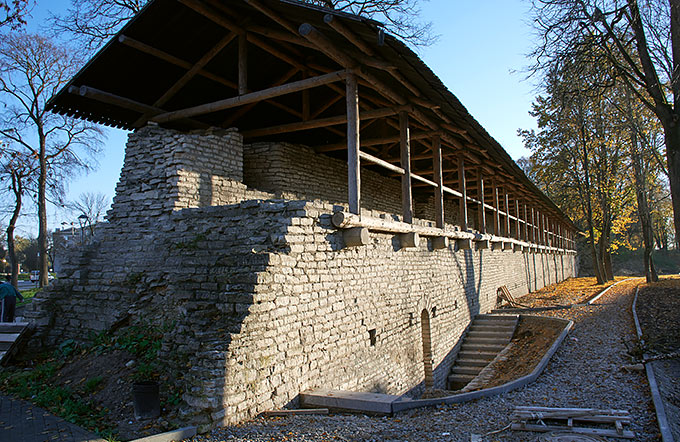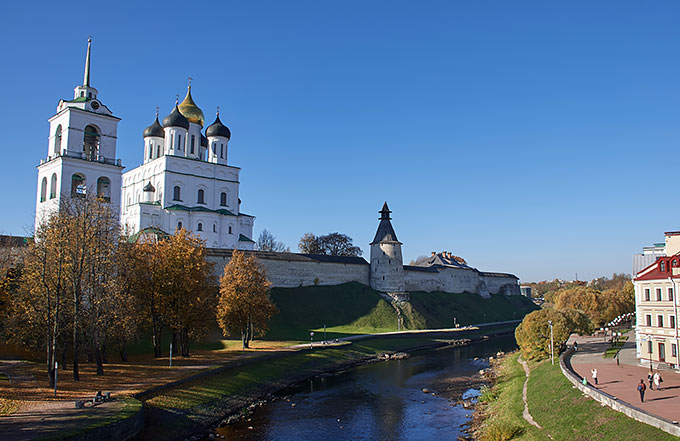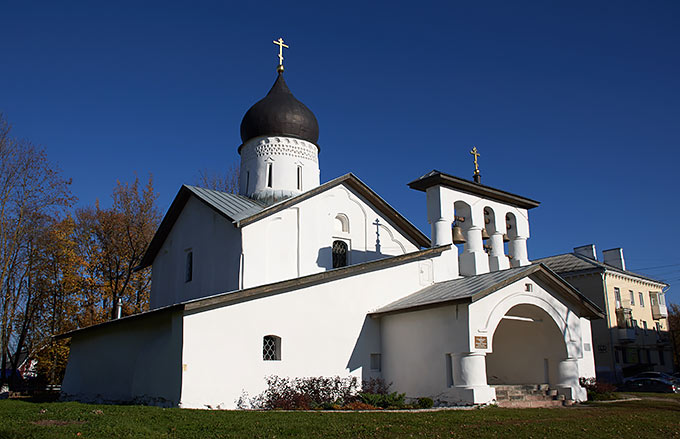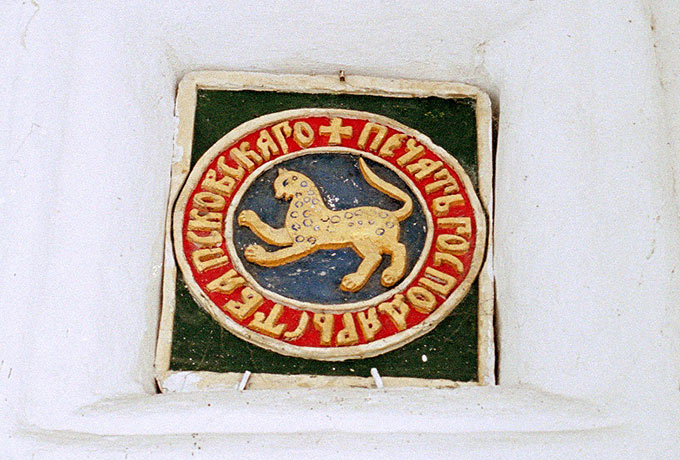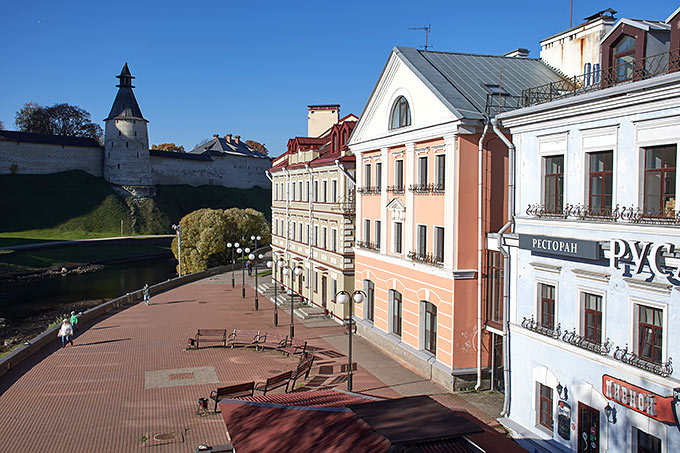History of Pskov
First-time entry about Pskov in the "Povest Vremennykh Let" (The Tales of the Old Years) is dated of 903 AD. "...Nobody knows how long Pskov city existed, and who were it's first peoples". Archeology believes that in IV century permanent Baltic-Finnish settlement was there.
Slavs appeared there near 5th century. They were so called Pskov's Krivitchs. The settlement was situated at the northern part of present Pskov's citadel (or Pskov's word - Krom) near river Pskova and Velikaja junction. It was administrative and culture center and had wooden fortification - ditches and high ramparts with wooden palisade on the top. In 1-th century the fortified town with citadel was there.
In 10-11 AD Pskov was part of Kyiv Russia and after that the Republic of Novgorod. It was constant subject of attack by the Baltic "Chudj".
In 1218 first attack of Germans knights took place. In 1240 they took Pskov because of treachery. In 1242 Germans retreated from the town and were defeated on the ice of Chudskoe Lake by Pskov-Novgorod troops under command of Alexander Nevskij.
First stone fortifications in Krom were erected in 1309. In 1323 new fortifications were tested during 18-day German's siege. In 1380 the wooden city walls were replaced by stone wall with 9 towers (or kostrys).
In 1384 Novgorod's protectorate over Pskov was abolished and Pskov became a free city. The period of 14-15th was revival of Republic of Pskov. The town had three fortified belts of walls with total length 9 km and strong Citadel. Pskov was one of the biggest city of Russia and Europe. The "Veche" (nation-wide people's assembly) made all important decisions about Pskov's rules, life, taxes and dues, human rights, war and peace. For example, in 1462 an impeachment was made to Pskov's ruler, knight Vladimir Andreevitch. "...At the veche he was poked down from the dais by Pskov's peoples", as it was said in the old chronicle. Russia has an old democratic tradition, as you can conclude.
Krom (Citadel) and Dovmontov town were completely reconstructed during the Republic. All remaining wooden fortifications were replaced by stone ones and redesigned for using of firearms. Pskov withstood twenty-six major sieges during its long history.
In 1510 Pskov lost its independence and freedom and became the part of Moscow state. More than 300 Pskovs powerful families were deported to the central areas of Russia and Moskovite's newcomers took their places. The symbol of Pskov's freedom - big veche's bell was removed from its place at the wall of Dowmontov town and executed - its clapper has been torn at the veche's square. Such was Pskov's payment for the safety...
The most fierce siege in all Pskov history was in 1581 during the Livonia War. There were 31 attacks of Pole's troops under command of Stefan Batorij during of five month siege. The next troubles appeared in 1615 during the "Smutnoe wremja" (The time of havoc). The Swedes under rules of the King Gustavus Adolfus stormed the city in the course of two months without success.
Many ancient temples of Dovmontov town were demolished during the Northern War with Swedes. It was made because of construction of the new bastions. After the Northern War, Pskov lost it significance as a fortress and became an ordinary provincial city of the Russian Empire. Rising of Saint-Petersburg undermined the town's economics. There were only 5000 inhabitants in the beginning of 19th century. "Peaceful and forgotten country..." - Alexander Pushkin has written about Pskov.
March 2, 1917 the abdication of the last Russian Czar Nikolai II took place in the emperor's car at the Pskov railway station.
February 24, 1918 Germans took the Pskov without fighting and hold it near to 9 months. They have gone in November 1918.
July 9, 1941 Germans captured Pskov once again. There was military, logistic and administrative center of army group "North" during the occupation. Pskov was the key point of "Panther" defense line (the northern part of German's "East Rampart"). July 22, 1944, Pskov was relieved by elements of 128 infantry division of 42 Soviet Army. The town was destroyed entirely. Only 15% buildings of the Pskov city are preserved. All its history monuments were damaged, the museums were deprecated and Troitzkij (Trinity) Cathedral was mined.
Restoration and conservation works began just after the WWII. Extensive Krom's restoration begun in 1960-th and lasted till nowadays.
Impressions
It won't be a waste of time to go to Pskov, if you want to see the real Russia. It's a worth the troubles of getting Russian visa, living at Russia hotel's, driving on Russian's roads and so on. Keep away of guides and other hum drums. Obtain a good map, compass, descriptions, timetables and other additional evidences and go ahead. If you'll lose yours bearings, take it easy. You will be assisted and warmed by decent local inhabitants and after all you'll stay here forever...
Land forts and fortress:
Bip Castle Gatchina Ivangorod Izborsk Kexholm Kirillov Monastery Koporye Novgorod Pechorskiy Monastery Peter&Paul Fortress Porkhov Pskov Schlisselburg Staraya Ladoga Tikhvin Vyborg Hameenlinna Hamina Kastelholm Kymenlinna Lappaenranta Raseborg Castle Savonlinna Tavetti Turku Visby Fredrikstadt Fredriksten Hegra Fort Hoytorp Fort Arensburg Narva Tallinn Antipatris Caesarea Jerusalem Latrun Fort Masada
Sea forts and fortresses:
Alexander Fort Ino Fort Krasnaya Gorka Fort Kronstadt: Kotlin isl. Kronstadt: North Forts Kronstadt: South Forts Trongsund Hanko Svartholm Sveaborg Marstrand Siaro Fort Vaxholm Oscarsborg
Artillery batteries and individual guns:
Coastal Artillery Hemso Fort
Fortified areas and defensive lines:
Karelian Fortified Area (KaUR) KrUR Leningrad Mannerheim Line Nevsky Bridgehead VT Line Harparskog Line Salpa Line Gothland
Russian
S e a r c h All news

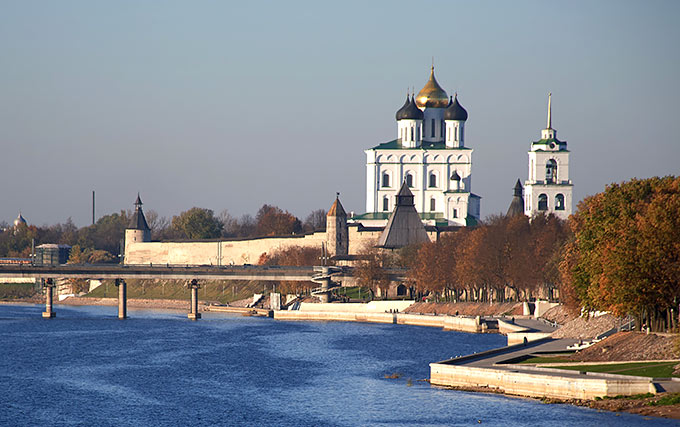 View of the Pskov (Krom) fortress
View of the Pskov (Krom) fortress
